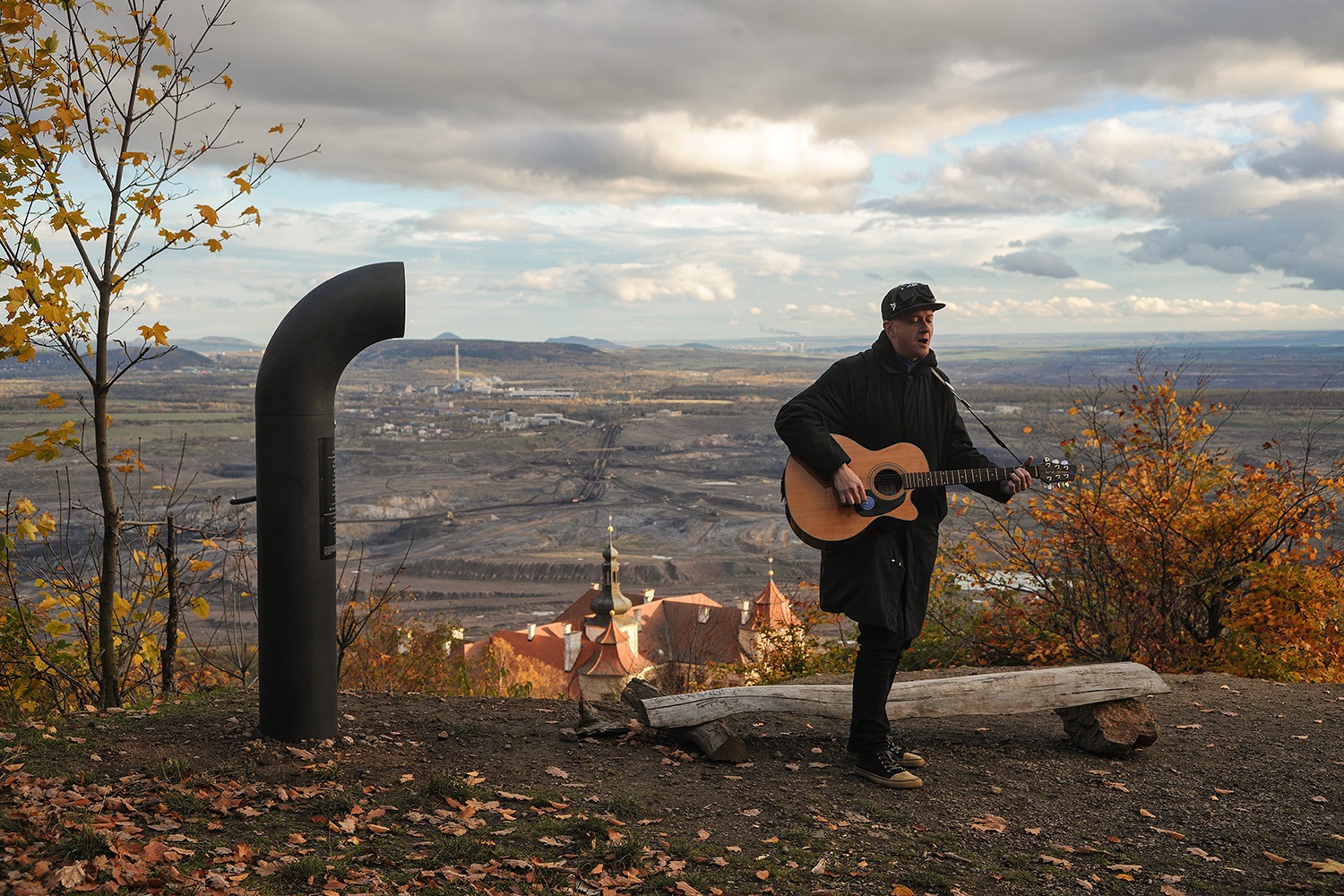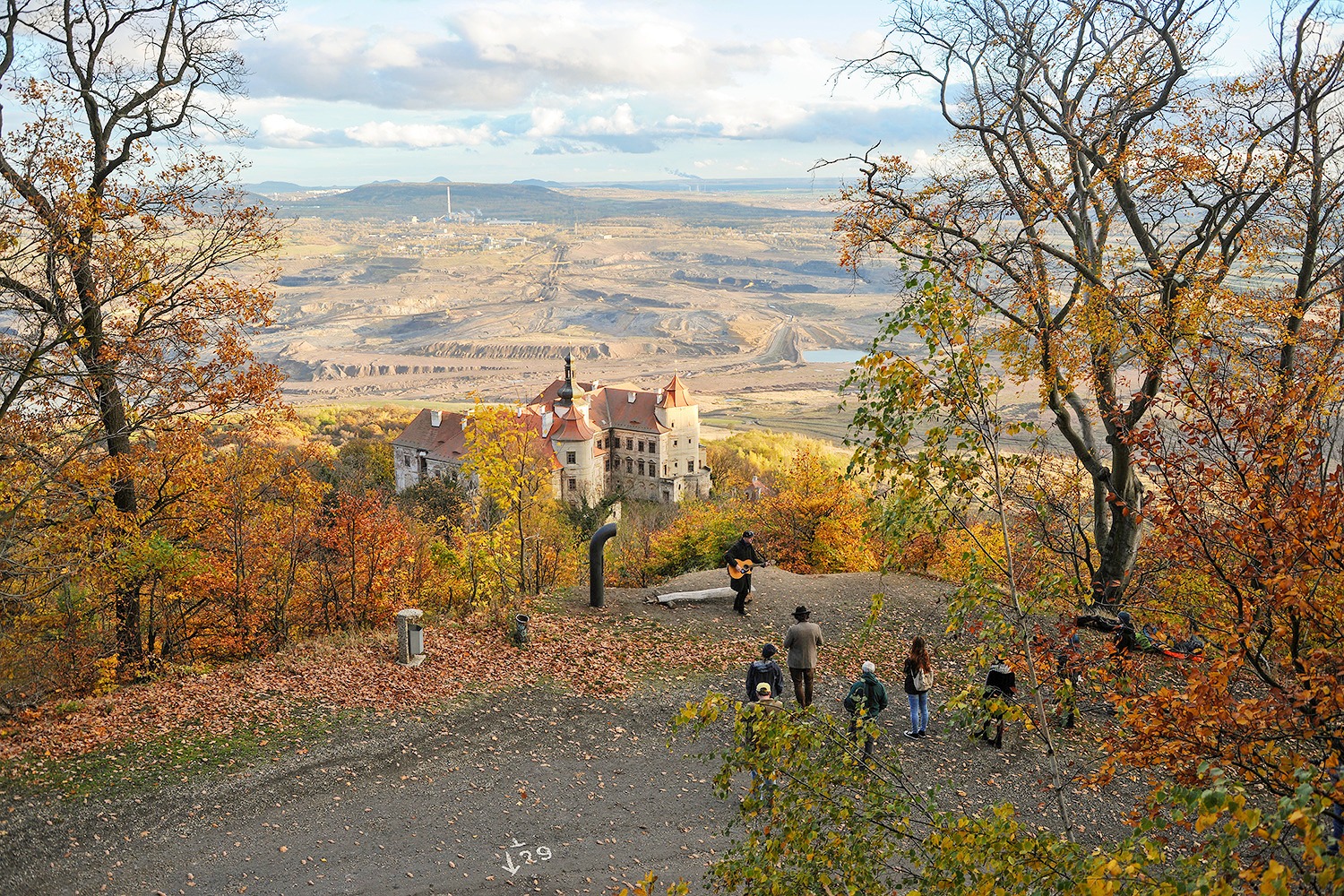The majestic Ore Mountains tower above the vast plain of the Most coal basin. And at their foot, surrounded by centuries-old beech forests, the Baroque Jezeří Castle. Few would have guessed that this is a building that has hosted some of the greatest giants of world culture during its rich history.
It acquired its present form during a Baroque reconstruction at the turn of the 17th and 18th centuries, and the name suggests a connection with the vast Komořanský Lake, which was located in the area of today's Mostek Basin. It was the establishment of the opencast mine and especially its gradual expansion that threatened the very existence of the castle.
Dozens of scientists and public figures, including the current British monarch, King Charles III, opposed the plan to extend the mine to the very foot of the Ore Mountains. The Jezeří Castle was eventually saved by a geological experiment with sugar cubes, as told in a poetic pipe.
Along with a narrative about the transformation of the landscape over the centuries, visitors can listen to a list of those involved in the rescue of Jezeří, authentic diary entries by one of Europe's most important opera composers, Christoph. W. Gluck, who spent his youth here, the famous Eroica symphony, which Ludwig van Beethoven first performed at the castle, or Johann Wolfgang Goethe's memories of his time spent in Jezier.
Poesiomats at castles were created with the support of the PPF Foundation.
The Poesiomat on the lookout above Jezeří Castle was placed thanks to the approval of the Women For Women Foundation.


